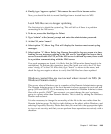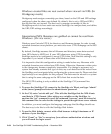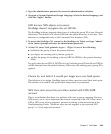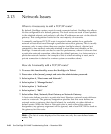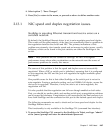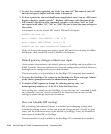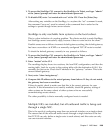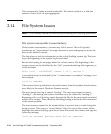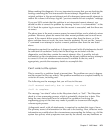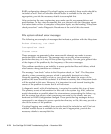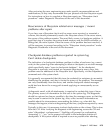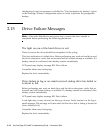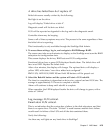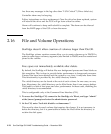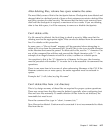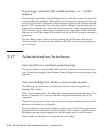
Chapter 2 NAS Head 2-71
Before making this diagnosis, it is very important to ensure that you are checking the
bootlog containing the first unsuccessful mount attempt. Regardless of what the
original problem is, the second attempt and all subsequent unsuccessful attempts to
mount the volume will always log the “previous mount did not complete” message.
If you are 100% certain that the problem is an interrupted mount attempt, you
should be able to correct the problem by entering “mount –f <volumename>” at the
CLI. Check the system log to ensure that the mount is successful, and that there are
no errors.
The above issue is the most common reason for mount failure, and a relatively minor
problem. However, please be aware that other mount problems can be much more
severe. If the mount failure occurs for any reason other than the above, or if the
above solution does not work, the issue must be escalated. Do not use the “mount –
f” command in an attempt to resolve a mount problem other than the one listed
above.
Information required for escalation: A diagnostic email with all attachments should
be sufficient for escalation. Verify that the boot logs are included with the
diagnostics, and that they contain the mount attempt. Also, if possible, include
information on the circumstances surrounding the mount problem and any attempts
to correct it. Find out whether remote access is available to the site, and if
appropriate, provide the necessary details to accomplish this.
Can’t write to file system
This is caused by a problem found at mount time. The problem can vary in degree,
and the causes for this vary widely. This problem manifests as a complete inability to
write for all users, including root.
The following are the messages that you will see in this case
/vol1 mounted read-only due to errors, run check
/vol1 is complete
The message “run check” refers to the filesystem check, or “fsck”. The filesystem
check is a time consuming process, which is potentially destructive to data. This
being the case, data should now be collected for escalation. Involving the
engineering group at this time may make it possible to circumvent the lengthy
volume repair process.
A diagnostic email, with all attachments, is required to escalate this type of issue.
The primary source of information for this case is the bootlog. Also, collect as much
information as possible about the circumstances surrounding the failure, e.g. did the
system lose power, what symptoms were seen by the clients, was any hardware or



